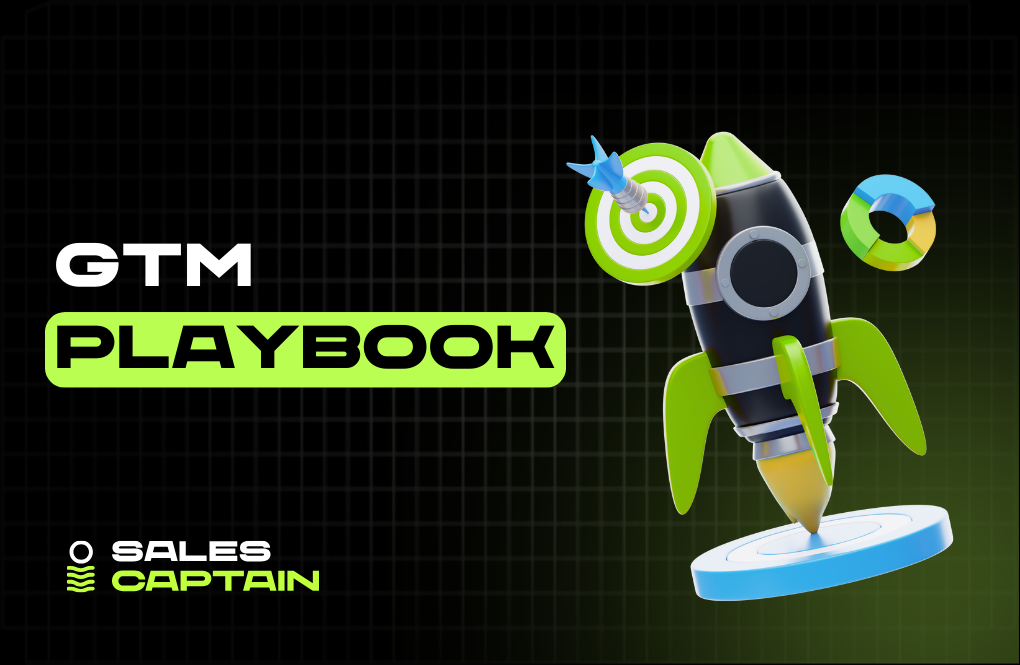

B2B Lead Qualification: Filter Noise and Route Buyers Who Convert

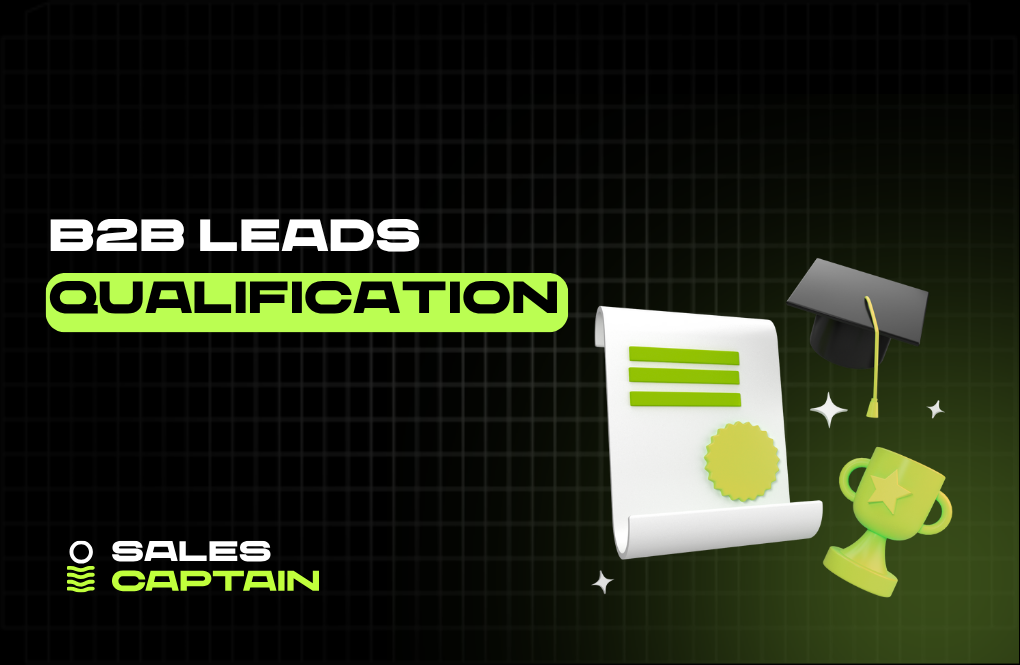
B2B lead qualification is the filter that turns noisy outreach into revenue.
By scoring fit and intent, you route only the right buyers to sales, cut wasted cycles, and protect your forecast. With clean data, clear ICP rules, and tight feedback loops, teams convert faster and spend less to win.
Why B2B Lead Qualification Matters Now
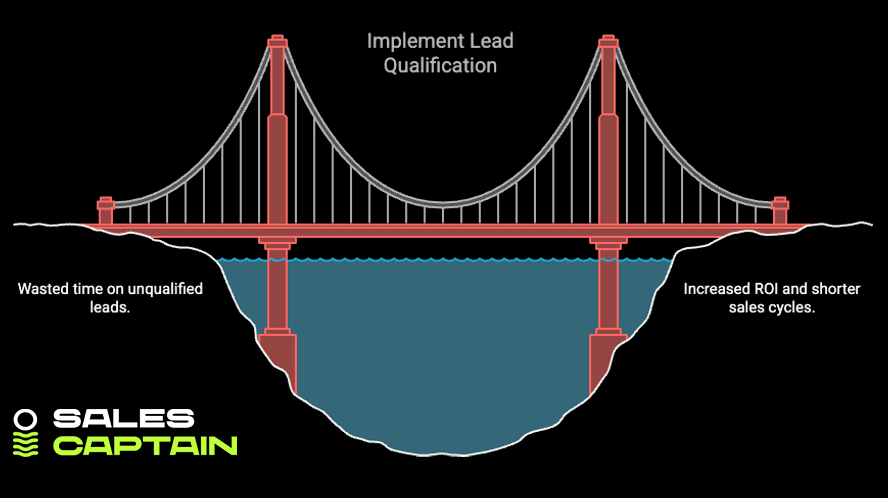
Market Trends Driving Lead Qualification
Outbound has changed. The spray-and-pray cold email days are gone. AI tools like Clay and the rise of data-rich workflows put precision within reach, but they've also flooded inboxes and created noise.
That's why lead qualification isn’t optional anymore. It’s survival.
Cheap, scalable outbound means every company can reach thousands of contacts fast. But that volume only works if you know who to spend time on. Qualification cuts through that scale. It tells your GTM system where to focus, when to engage, and who to ignore.
Signal-based selling is here. Modern outbound isn’t just sales reps blasting lists. It’s systems reading data, using enrichment tools, and automating outreach, where your tech stack (not just your SDRs) is doing the qualifying in real time.
Impact on Sales Efficiency and ROI
Sales teams are stretched. Quotas have risen. Headcount hasn't.
Qualification is what keeps them from wasting cycles. A well-run lead qualification system means reps spend more time closing, not chasing. It directly lowers CAC and shortens sales cycles by focusing attention on leads that actually match your ICP, in behavior and fit.
It also tightens feedback loops for marketing and ops. More signal, less noise. Higher ROI across the funnel. And when GTM motions are tied together, when outbound, ads, and website inbound all feed into a centralized qualification process, you stop letting good leads slip through cracks.
Understanding Lead Qualification
Definition and Importance
Lead qualification is the process of evaluating whether a lead is worth your time.
Not everyone who fills out a form or replies to an email should be routed to sales. Qualification filters out curiosity from intent, interest from readiness.
Done right, it gives your sales team leverage. They start with higher-converting leads. They know which accounts fit the product, and which champions can actually buy it.
Without it? Reps burn hours on dead-end convos, marketing gets blamed for “bad leads,” and your CRM becomes a junk drawer with no visibility into what’s working.
Difference Between Lead Qualification and Lead Generation
Lead generation is about creating interest. Capture. Inbound. Demand.
Lead qualification is what happens after.
It’s the difference between a name in your inbox and a high-fit buyer. Lead gen fills the top of the funnel. Lead qualification sharpens the funnel and pushes only the right prospects forward.
Treating them as the same breaks your sales process. You need both, but they serve opposite roles.
Types of Qualified Leads
Not all qualified leads are created equal.
Here’s how to break it down:
- MQL (Marketing Qualified Lead): Engaged with campaigns, often based on behavioral triggers (email clicks, webinar signups, ad interactions).
- SQL (Sales Qualified Lead): Hand-raised or heavily vetted. Meets criteria like budget, authority, and timing. Ready for sales engagement.
- PQL (Product Qualified Lead): Based on product usage. Often tied to freemium or trial models. Think: someone who hit feature X or invited a team.
You don’t need all three. But you do need clarity on what qualifies someone in your funnel, and alignment between teams about who owns what.
Identify Your Ideal Customer Profile
Defining Your Target Audience
You can’t qualify a lead if you don’t know what a “qualified” customer looks like. Start with non-negotiables.
Which industries get the most value from your product? What revenue range or team size? What titles typically champion it internally?
These aren't just marketing questions. They determine who gets targeted, how SDRs prioritize, and whether automation hits the mark or misses.
Bad ICP? No amount of outbound will save you.
Key Traits of an Ideal Customer
High-retention customers tend to have patterns. Look for:
- Use case alignment: Does your product solve a job they actually care about?
- Urgency: Do they feel pain today or just window shopping?
- Buying authority: Are they the decision-maker or just evaluating?
Customer traits aren’t just about demographics. They’re about intent, budget cycles, and workflow urgency. The more data you gather, from deals won, deals lost, and live usage, the sharper your ICP becomes.
Utilizing Buyer Personas
Buyer personas bring your ICP down to the individual level.
It’s not just “mid-market software companies.” It’s the 28-year-old Head of RevOps at a Series B startup who’s drowning in tools and needs to clean their GTM stack.
Effective personas are rooted in real conversations, not fiction. Use sales call transcripts, support chats, and behavior metrics to define:
- Goals and fears
- Daily workflow
- Triggers that make them take meetings
When your personas are dialed in, your messaging lands, your outbound converts, and your qualification feels frictionless, because you're talking to someone who actually cares.
Effective Lead Qualification Frameworks
BANT: Budget, Authority, Need, Timing
BANT is old-school, but it works.
- Budget: Can they buy?
- Authority: Can they sign?
- Need: Is there a real problem?
- Timing: Are they buying now?
It’s simple, but don’t treat it like a checklist. Ask questions that spark conversation, not box-ticking. For example, “What other tools are you budgeting for this quarter?” tells you more than just asking if they have a budget.
BANT shines when you're qualifying smaller deal cycles where speed matters more than complexity.
MEDDIC: Metrics and Decision Criteria
MEDDIC goes deeper. It’s built for high ACV, complex sales, where multiple stakeholders, long sales cycles, and strong business cases are the norm.
It includes:
- Metrics: What tangible outcomes matter to them?
- Economic Buyer: Who controls the money?
- Decision Criteria: What benchmark are they comparing you to?
- Decision Process: What steps do they follow internally?
- Identify Pain: What's burning right now?
- Champion: Who’s pushing for you?
MEDDIC takes longer to gather, but if you skip it on enterprise deals, you lose the roadmap to close.
CHAMP: Challenges and Priorities
CHAMP flips BANT. It starts with pain points, not budget.
- CHallenges
- Authority
- Money
- Prioritization
The key difference is that CHAMP assumes everyone has a budget; they just don’t see you as a priority yet. It’s designed for earlier conversations where you’re uncovering needs, not just checking boxes.
Use CHAMP when you're educating the market, especially in outbound, where buyers don't realize they have a problem yet.
ANUM: Authority, Need, Urgency, Money
ANUM lets sales teams qualify faster by leading with authority.
Why? You can’t move the deal forward unless the right person is in the conversation. So ANUM prioritizes:
- Authority: Are we talking to a decision-maker?
- Need: Is there actual pain?
- Urgency: How soon do they want this fixed?
- Money: Can they afford it?
This framework works well in outbound workflows and automated cadences where your first goal is to disqualify fast, and pass warm leads to humans only when it’s worth the follow-up.
Step-by-Step Lead Qualification Process
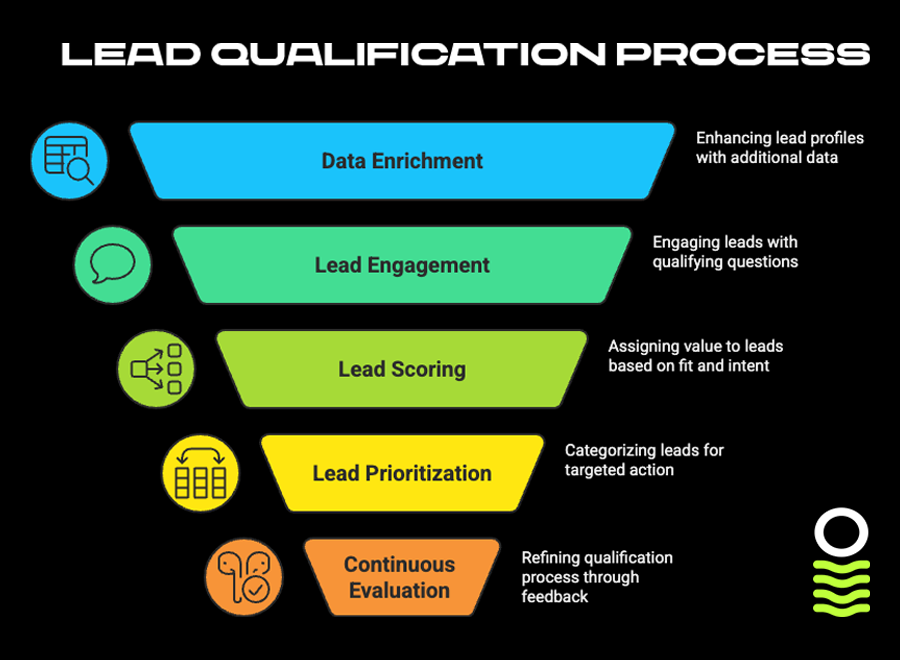
Step 1: Data Gathering Techniques
Lead quality starts upstream, with your inputs.
Manual research kills speed. But zero context kills conversion. You need both.
Use data enrichment tools and web signals to enhance lead profiles automatically. Things like:
- Job title, seniority, tenure
- Tech stack, hiring trends
- Recent funding rounds, press
- LinkedIn activity and intent signals
If you're doing this at scale, Clay is your best bet. It lets you enrich from dozens of sources, filter by custom logic, and create tightly defined workflows, all without touching a spreadsheet. Use the link above to get 3,000 free credits.
Qualification starts here. Garbage in, garbage out.
Step 2: Engaging Leads with Qualifying Questions
Once you’ve got signal-rich leads, it’s time to open the conversation.
Automated outreach should feel personalized, not fake personalized. This is where your questions matter.
Good qualifying questions do 2 things:
- Reveal fit (e.g., “How are you currently solving [X]?”).
- Create insight (e.g., “What’s the cost of not fixing [Y]?”).
Avoid “Do you have a budget?” cold. Instead, guide the convo and listen. Cold outreach that qualifies should feel like a helpful audit, not a sales call.
Step 3: Scoring and Prioritization Methods
Now you’ve got answers. Time to sort them.
Lead scoring assigns value to each lead based on fit and intent. It can be manual, automated, or hybrid.
Scoring models often combine:
- Firmographics: Company size, industry, territory
- Psychographics: Pain signals, urgency, buying triggers
- Behavior: Website visits, email responses, product actions
Use rules to tier leads (e.g., A/B/C or hot/warm/cold). Then automate handoffs. Tier A gets routed to reps. Tier B goes into nurture. Tier C gets deprioritized.
Don’t set it and forget it. Build feedback loops with your sales team to tweak these rules over time.
Step 4: Continuous Evaluation and Refinement
Qualification isn’t static.
Your ICP will evolve. Product-market fit shifts. Buyer behavior changes with market conditions. What worked a quarter ago might kill deals today.
Review disqualified leads. Track lost deals. Analyze what your best customers looked like at the point of entry. Feed that back into your system.
Great GTM systems aren’t just tactics, they’re loops. Qualification isn't a one-time triage. It's a living, breathing process that improves through iteration.
The best teams don’t just move faster. They qualify smarter, adapt quicker, and close deeper.
And if your team doesn’t have the bandwidth to build this system from scratch, agencies like SalesCaptain can accelerate your qualification and outbound infrastructure. Not just run campaigns, install a real GTM engine.
Utilizing Technology for Lead Qualification
Overview of Lead Qualification Tools
You can’t qualify leads at scale without tech. The human brain is great for nuance, but not for sifting through thousands of data points in a spreadsheet.
Modern lead qualification tools handle:
- Enrichment: Pulling in firmographic, technographic, and intent data.
- Scoring: Building systems to auto-prioritize based on fit and behavior.
- Tracking: Surfacing signals across web, product usage, and campaigns.
- Routing: Pushing leads to the right rep, sequence, or nurture path.
Tools like Clay sit at the center of this motion, connecting to multiple data sources, layering on filters, and automating workflows without writing a single line of code. You can run a complete qualification process that used to take three sales reps and still miss signals.
Other tools in the ecosystem: Clearbit, ZoomInfo, Apollo, MadKudu, 6sense. Each serves a specific purpose, but the magic happens when you stitch these signals into a system that runs in real time.
The days of “download list, hand to SDR” are over. Your tech stack is now your lead screener.
Features to Look for in Software Solutions
Not every shiny tool is built for GTM teams. When evaluating qualification software, skip the buzzwords and look at the 3 core pillars:
- Data flexibility
Can it pull from multiple sources (firmographics, intent, product usage)? Can it enrich in real-time or only via batch? Can it plug into your existing stack? - Workflow customization
The best tools let you define your own qualification logic. Think: If title = "Head of RevOps" and the company raised >$10M and is using HubSpot, then score = 90. Static systems lock you in. You want programmable, dynamic, and scalable. - Integration with GTM ops
Can it trigger a Slack alert? Route to Salesforce with the right tags? Push into an email sequence or ad audience? Your qualification tech needs to be action-oriented, not just a dashboard.
Bonus: Strong UI/UX matters more than you think. If your RevOps person dreads logging in, they won’t use it.
How Automation Enhances Qualification Processes
Manual lead qualification doesn’t scale. You can’t out-hustle bad systems forever.
Automation changes the game in 3 key ways:
- Speed: Enrich leads in seconds. Score them instantly. Route without delay.
- Consistency: Every lead gets evaluated under the same logic. No subjective gut calls. No “this one feels good” guesses.
- Volume: You can reach 1,000+ leads a day, with qualification logic baked into your outreach, not bolted on afterward.
Example: You use Clay to auto-enrich a lead list from Apollo, filter for company tech stack, title, and hiring momentum, then score using custom formulas, and auto-route high-fit leads into a cold email sequence built in Instantly. Zero manual steps.
That’s what replaced the old SDR function.
And if your team isn’t technical enough to build this out, consider working with a demand generation agency like SalesCaptain. They build systems, not just send campaigns.
Metrics for Measuring Lead Qualification Success
Key Performance Indicators (KPIs)
If you don’t measure it, it never improves.
Lead qualification isn’t just about “feel”; it’s a measurable layer in your GTM system. The right KPIs tell you if your process is actually making sales easier.
Start with these:
- Lead-to-opportunity conversion rate
- Time to first sales touch
- Lead response time
- Disqualification rate (and reasons why)
- Accepted SQL percentage
Track at both the individual and campaign levels. If a cold outbound list drives high MQLs but low SQL conversion, your qualification logic is off. If reps reject 70% of marketing leads, you’re scoring wrong. KPIs should call this out at the system level, not just in meetings.
Conversion Rate Metrics by Lead Type
Not all qualified leads convert equally. You need to break this down.
- What percent of your MQLs become opportunities?
- How do PQLs compare to SQLs in close rate and deal size?
- Are inbound leads converting faster than outbound?
Here’s where segmentation matters. Group leads by source type (inbound, outbound, partner, PQL), then measure:
- Conversion to opportunity
- Win rate
- Sales cycle length
- Average deal size
If your outbound PQLs have a 3x win rate over marketing MQLs, that’s a signal. If inbound MQLs are clogging the funnel with low-value noise, you’ll see it fast.
Qualification should drive performance, not just filter names.
Importance of Feedback Loops
No qualification model stays perfect forever.
Markets change. Buyer behavior shifts. A top-converting persona last quarter might go radio silent today. That’s why feedback loops matter.
Set up structured ways for sales and marketing to close the loop:
- Weekly breakdowns of lead quality by channel
- Quarterly analysis of disqualified leads (by sales and automation)
- Post-mortem reviews on lost deals that made it through qualification
Tag leads. Note disqualification reasons. Build that data into your CRM and reporting. Then, adapt your scoring rules, personas, and outreach logic.
The best GTM teams operate like product teams. Constant iteration. Tight loops. Rapid learning.
Common Mistakes in Lead Qualification
Relying Too Heavily on Automation
Automation is powerful, but dangerous when unmonitored.
Set-it-and-forget-it outreach with rigid qualification rules creates two problems:
- It passes great leads too late (they fall through gaps).
- It sends junk to sales just because it checked certain boxes.
Tech without human oversight doesn’t understand context. A VP of Ops at a 3-person agency shouldn’t get the same score as a VP of Ops at a $10M SaaS company, even if their titles match.
Always pair automation with human review. Watch patterns. Listen to sales calls. Tweak logic. Otherwise, you end up optimizing for the wrong signal.
Ignoring Lead Nurturing Strategies
Disqualified doesn’t mean dead.
Not every lead is a match today, but many will circle back in six months. Without a nurturing strategy, you’re leaving warm-ish contacts to go cold.
Build nurture paths by lead reason:
- No budget? Loop them into mid-funnel content.
- Wrong timing? Enroll in quarterly check-ins.
- Wrong contact? Ask for referrals and reroute.
The goal of qualification isn’t to discard leads, it’s to route them correctly. That includes nurture, not just handoff to sales.
Poor Data Management Practices
Bad input, bad outcome.
Leads without proper enrichment, incomplete records, or dirty data make your whole system collapse. Common fails:
- Inconsistent job titles
- Duplicate records across systems
- Missing enrichment on key fields (industry, headcount, intent)
It’s not just a hygiene problem; it’s a performance killer. Scoring gets thrown off. Routing rules break. Sales wastes time.
Make data health part of your ops motion. Clean often. Automate enrichment where possible. Normalize inputs at the point of entry.
Neglecting To Update Qualification Criteria
Your ICP last year isn’t your ICP today.
Maybe you’ve moved upmarket. Or launched a new pricing model. Or doubled down on a different vertical.
If your qualification criteria stay frozen, you’ll drag low-fit leads through unnecessarily, and gate the good ones out.
Audit your criteria quarterly. Ask:
- Which traits do closed-won deals have in common?
- Are your top personas changing?
- Are buyers entering the pipeline in new ways (product, content, events)?
Then adjust. Qualification is not a static checklist. It’s a living system that evolves with your GTM motion.
Case Studies and Real-World Examples
Successful Lead Qualification Implementations
A B2B SaaS startup selling to HR leaders used to manually qualify every lead. Their SDRs spent hours scanning LinkedIn, checking Crunchbase, and guessing intent. Close rates? 3%.
They implemented a workflow using Clay to enrich data in real time, score leads based on firmographics and tech stack, and route hot leads instantly to outbound cadences. Within 90 days:
- SDR time spent qualifying dropped by 60%
- Close rate jumped to 9%
- Pipeline velocity nearly doubled
Better yet, they built a custom dashboard that showed which signals led to the highest win rate, feeding intelligence back into the system.
This is what happens when qualification isn’t an afterthought, but the engine.
Lessons Learned from Failed Attempts
Not every system works out of the gate.
One Series A fintech company built a hyper-strict MQL model; leads had to meet five exact criteria to pass to sales. Problem? They missed nuance. Great-fit leads were marked “unqualified” just because of one missing data point.
Sales had zero pipeline, and marketing got blamed.
They eventually walked it back, added a “review” bucket for edge cases, and incorporated feedback from lost deals into their scoring.
Lesson: don't over-engineer. Qualification should reduce noise, not erase the signal. And when in doubt, build in human checkpoints before leads get flushed.
Comparison of Popular Lead Qualification Tools
Overview of Leading Tools
The lead qualification tool landscape is crowded. But a few platforms stand out based on flexibility, integrations, and actual usage by growth teams:
- Clay: No-code data automation. Pulls from dozens of sources to enrich, filter, and orchestrate qualification workflows. 3,000 free credits here.
- Clearbit: Firmographic and IP-based enrichment. Ideal for anonymous visitor identification and high-level scoring.
- Apollo: Powerful database with native email outreach. Basic qualification is possible inside sequences.
- 6sense: Account-based orchestration. Strong on intent signals and larger enterprise workflows.
- MadKudu: Marketing-focused scoring, often used for PQL identification based on product behavior.
- ZoomInfo: Large contact database with enrichment and intent layers.
Pick based on need. Clay is ideal if you're building a qualification engine from scratch and want full control. Tools like 6sense excel at ABM coordination across teams. Apollo works well if you're combining prospecting and basic scoring in one tool.
But no tool is magic. Qualification is about system design; the tech just makes it scalable.
Best Practices for Lead Qualification
Collaborating with Marketing for Success
Sales can't qualify leads in a vacuum. If marketing is sending over every download or click as an MQL, you're not aligned; you're overloaded.
Tight collaboration starts with shared definitions. What qualifies as high-intent? What behaviors show buying signals? If sales and marketing aren’t aligned on this, lead handoffs turn into blame games.
Schedule regular syncs. Compare feedback from closed-lost deals. Create shared dashboards that let everyone see where leads get stuck or dropped. When marketing understands downstream conversions, and sales understands upstream intent, qualification becomes a team sport, not a finger-pointing loop.
Bonus: loop in ops. If there’s a disconnect between scoring logic and routing rules, even great leads will vanish into a black hole.
Establishing a Dedicated Lead Qualification Team
If everyone owns a qualification, no one really owns it.
That’s why growth-stage companies are spinning up specialized teams, sometimes called inbound SDRs, labeled lead routing, sometimes Demand Gen Ops. Whatever the name, their job is clear: apply the right filters, enrich context, and move high-fit leads to the next best action, fast.
This team can handle:
- Reviewing edge cases, automation can't score
- Running quick discovery screens
- Bridging the gap between marketing-qualified and sales-ready
Think of them as GTM air traffic control, scanning signals and directing leads to the right destination. Done right, they protect AE bandwidth while accelerating pipeline velocity.
And if your internal team isn’t ready to build that muscle? Outsource it. A cold outreach agency like SalesCaptain can act as an extension of your team, not just pinging leads but folding qualification into your outbound flow from day one.
Training Sales Teams on Qualification Techniques
Qualification isn’t just a checklist. It’s a skill.
And yes, automation screens most leads upfront, but your AEs still need to qualify in real time. That means asking the right questions fast, spotting red flags early, and knowing when to walk away.
Skip the theory-heavy sessions. Train around live calls. Pattern-match across closed-won vs. churned accounts. Build cheat sheets tied to your actual ICP and personas, not generic discovery scripts.
Good training helps reps:
- Push past surface answers (“Yeah, we’ve got budget”)
- Spot misaligned buyers who talk the talk but won’t close
- Use qualification as a value-delivery convo, not an interrogation
Qualification is where good sales begin. Teaching reps to do it well doesn’t just drive conversions, it prevents pipeline bloat and protects your forecast.
Future Trends in Lead Qualification
AI and Machine Learning Applications
AI isn’t the future of qualification; it’s already reshaping it.
Machine learning models now predict who’s likely to convert based on behavior, usage, and engagement patterns. Instead of waiting for a rep to manually vet a lead, these systems score in real time, using email opens, website visits, meeting bookings, and even product actions as signals.
Natural language models are also powering smarter outreach, generating personalized messaging based on enriched context. The result? Qualification is built into the first email, not bolted on in the call.
Example: You upload an Apollo list, enrich it with Clay to add tech stack and funding info, score it with your custom logic, and use that to trigger personalized Instantly sequences, all with zero reps involved.
This is where SDRs are being replaced, not by one tool, but by a stack that qualifies at machine scale with human nuance.
Evolving Consumer Behaviors
Today’s B2B buyers don’t follow the classic funnel.
They read reviews before talking to you. They browse pricing before requesting a demo. Some join your Slack community before visiting your site.
That means intent signals are fragmented. Qualification now requires you to track off-site behavior (e.g., review site visits, LinkedIn engagement) alongside traditional firmographic and behavioral data.
Buyers also expect real-time experiences. If they engage and no one follows up within minutes, they’re gone. Qualification processes need to be fast, responsive, and low-friction, not 5 touchpoints deep.
To stay ahead, GTM teams have to operate like systems, wiring in feedback loops, dynamic routing, and multi-source enrichment. The old model of “download a lead list, hand to SDR” just doesn’t hold up against modern buyer autonomy.
FAQs
Lead qualification sifts through the noise. Its job is to separate curiosity from real intent, and fit from fantasy.
Not every inbound form or outbound reply deserves a sales call. Qualification ensures your GTM team focuses only on leads that match your ICP and show signs they’re ready to engage. It protects sales bandwidth, accelerates deals, and increases conversion efficiency.
More importantly, it directs your system. Qualification tells your tech stack, and your team, who to pursue, who to nurture, and who to forget.
Every quarter, minimum.
That’s the rhythm most high-velocity GTM teams follow. Why? Because your market shifts fast, new competitors launch, budgets tighten, ICPs evolve, and personas shift roles.
Static qualification criteria go stale. You end up filtering out great leads or chasing ones that will never close.
Build a loop: review won deals, analyze sales call insights, track disqualified reasons, and re-score based on results. Updating criteria isn’t a to-do. It’s part of maintaining your growth engine.
Plenty, but only a few do it well at the system scale.
Start with Clay. It lets you enrich lead lists from dozens of data sources, score them using complex logic, and route them, all without writing code. Grab 3,000 free credits with that link.
Other helpful tools include:
- Clearbit for firmographic enrichment
- Apollo for contact discovery + outreach
- 6sense for intent + account scoring
- MadKudu for product-led scoring models
The power’s in the stack when these tools aren’t siloed, but stitched into a repeatable, rules-driven GTM workflow.
Make it a system, not a task.
Here’s where to start:
- Audit your current performance (look at conversion rates by lead source and type)
- Tighten your ICP and buyer personas
- Automate early-stage enrichment and scoring with tools like Clay
- Run feedback loops with sales weekly
- Avoid over-relying on one signal (intent alone ≠ fit)
And if you’re stuck or scaling fast, bring in specialists. A demand gen agency like SalesCaptain can build the workflows, infrastructure, and feedback loops you’d otherwise take quarters to build internally.
Lead qualification isn’t something you fix once; it’s something you should always be improving.
RELATED ARTICLES
Lorem ipsum dolor sit amet, consectetuer adipiscing elit, sed diam nonummy nibh euismod tincidunt ut laoreet dolore magna aliquam erat volutpat.
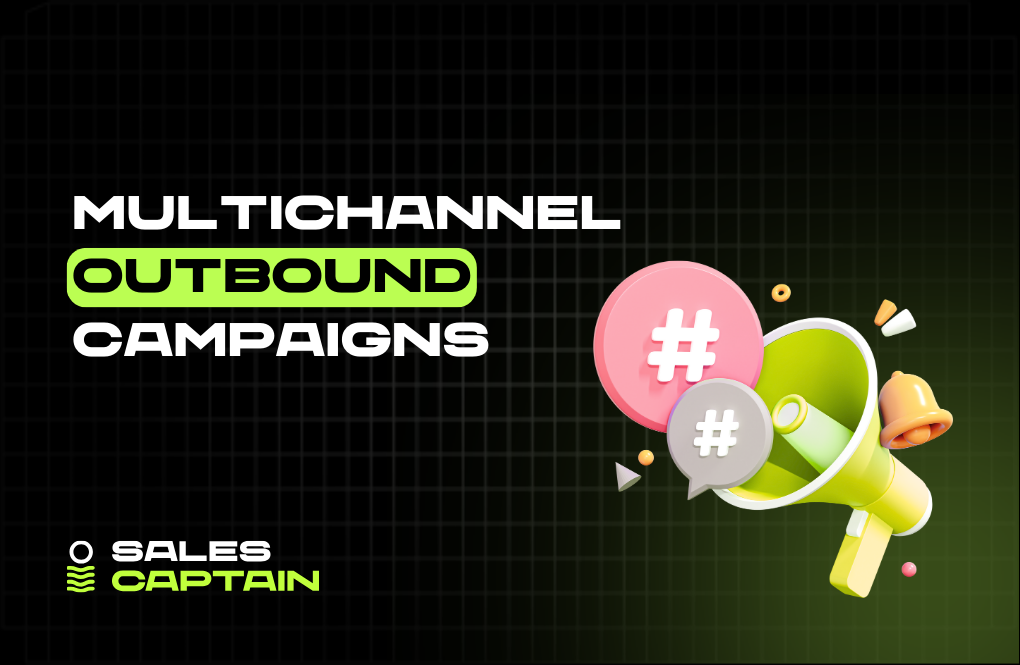
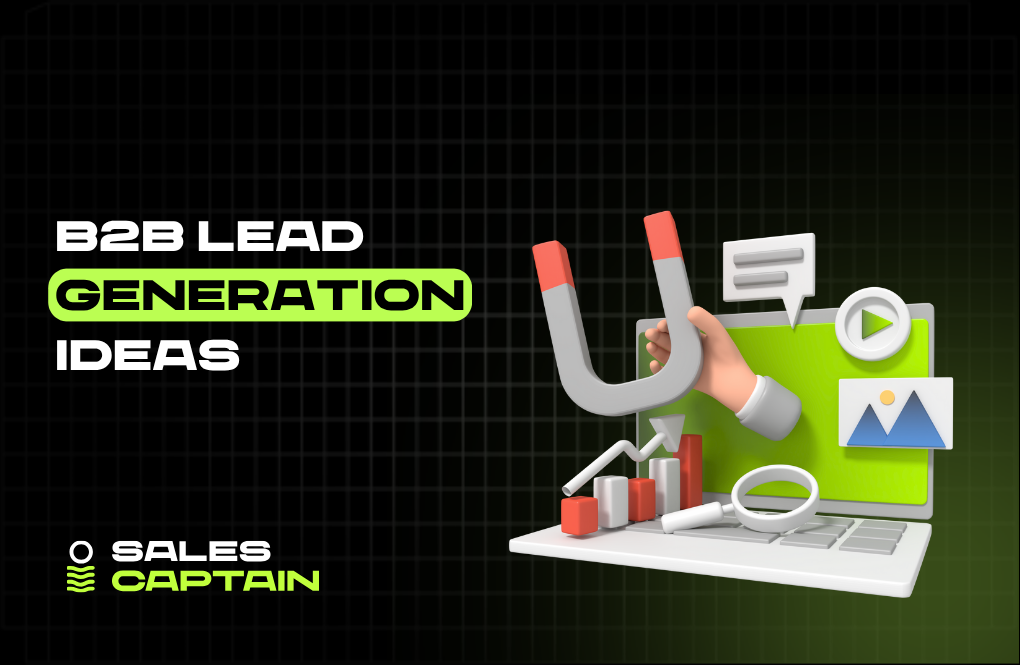
.png)

.jpg)

